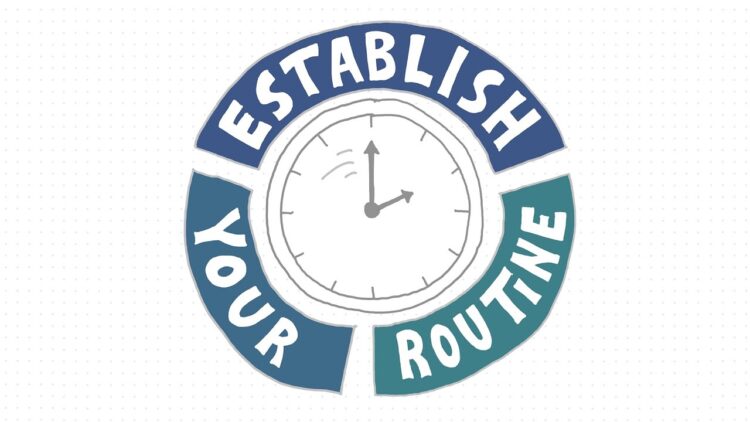Everyone faces challenges at some point in their work process. One of them is the creative block, also known as the ‘blank page syndrome’. It can apply to writing, drawing, painting, graphic design, studying, and even coding. As the name explains, it is the point where the artist (or writer, IT developer, designer, etc.) reaches a plateau of creativity and basically runs out of ideas or cannot even get started with the creative effort.
Since many people depend on those ideas to further advance their work, it is very important to learn how to manage it when it happens. The feeling can sometimes be overwhelming as it makes the person feel like a failure, but that cannot be further from the truth. It happens to literally everybody, and there are ways to continue working despite of it. It is a personal process, and there are plenty of options to try.
On Mvix Digital Signage we have found a few tips on successfully overcoming the creative block, and we have expanded our list to include a few more.
Page Contents [show]
1. Establish a routine

Source: youtube.com
If you don’t already have one, it is time to establish it. It is a solid measure to take before the creative block actually happens. However, even if you are faced with the blockage, it is still a good time to start with it. The concept is to have a period that is committed to your creative work only. That means that you won’t leave it to inspiration, and you won’t be waiting around to get motivated, but instead, you will have the right mentality about that specific part of the day and it will be a quality time in which you won’t get distracted by other things as it is already dedicated to your work.
2. Take a break
This can mean many things. Namely, taking a 20-minute power nap can make some ideas crystalize and will help you power through the assignment. In the long term, getting enough sleep can be a game-changer. Not getting enough sleep, over time, can make you as ineffective as if you are legally drunk. Sleeping for 7-8 hours on a regular basis will benefit both your physical and mental health. Also, talking a long walk, particularly in nature, can release your mind from the clutter and can recharge with newfound energy.
Another thing to try is reading. It can be anything, from a magazine – which would be a light read, to something more uplifting and deep, with personal significance. It is up to you. By watching something funny or inspirational, you might become stirred up to start a new project, or finish something that you have been working on. Any of this will very likely get your creative juices going.
Music has always been a powerful tool. Whatever makes you move, sing, clear you mind, or simply put you in a certain mood that you are aspiring to be in – listen to it, and enjoy as you never know when the ideas will struck – it might happen unexpectedly.
3. Keep notes

Source: stylecaster.com
It is very important to carry a notebook or a diary with you. That way, you will be able to write down the ideas, no matter when and where you get them. This is the old-fashioned way. Of course, you can always use an app on your phone for this, even though having a hard copy and sitting down and actually writing would probably be a better alternative.
4. Change the environment
Being stuck at the same place can be a buzzkill, and it might smother your creative vibe. Especially with the ongoing pandemic, this might be the case even more, so a change of the settings might be in order. That might mean trying to work from an empty café, taking a trip to the park, or even packing your suitcases and going on a trip. It might be a bit complicated given the situation, and you might be limited with the places you can visit, but really, any change of scenery would be useful, no matter how minor it is. However, the safety is a priority.
5. Perform a monotonous task

Source: medium.com
Nothing will get your mind going as performing an automated task. This can mean washing the dishes, cleaning the bathroom, or even driving someplace. When you engage in something that doesn’t require a lot of brainpower, your thoughts will start flowing.
6. Take a risk with the task
Once you get stuck, perhaps it is time to take a risk and try something different, atypical, and see how it turns out. It might be utter failure, but it is all part of the process. You will learn what does and what doesn’t get the job done.
7. Let the emotions cool off

Source: lifehack.org
If you are too excited about a project, or you are getting too emotional, even overwhelmed, perhaps it is time to take a step back and let the emotions settle down. Not being indifferent is great, but occasionally, emotions might blurry the image we have, or might lead us down a wrong path. Cool off your head and approach the task once again to find new perspectives and angles.
8. Eat a nice meal
Food is very relevant to our attitude, and our health in general. Eating something that you enjoy will release hormones that will put you in a good mood.
9. Exercise

Source: europeansting.com
Getting a good workout might be the solution to your problem. After exercise, the body will release endorphins which lower the perception to pain and make you feel happier overall. You will release the stress, and will feel refreshed to continue working.
10. Embrace the pressure
Pressure is nothing unexpected, but you shouldn’t let it stop you. Instead, embrace it and learn to manage it. There will usually be a deadline, there will be expectations – it is a part of the job. Make a step with confidence that you will meet them by doing your best and let it put you into a mindset that will enable you to release and guide the creativity.





